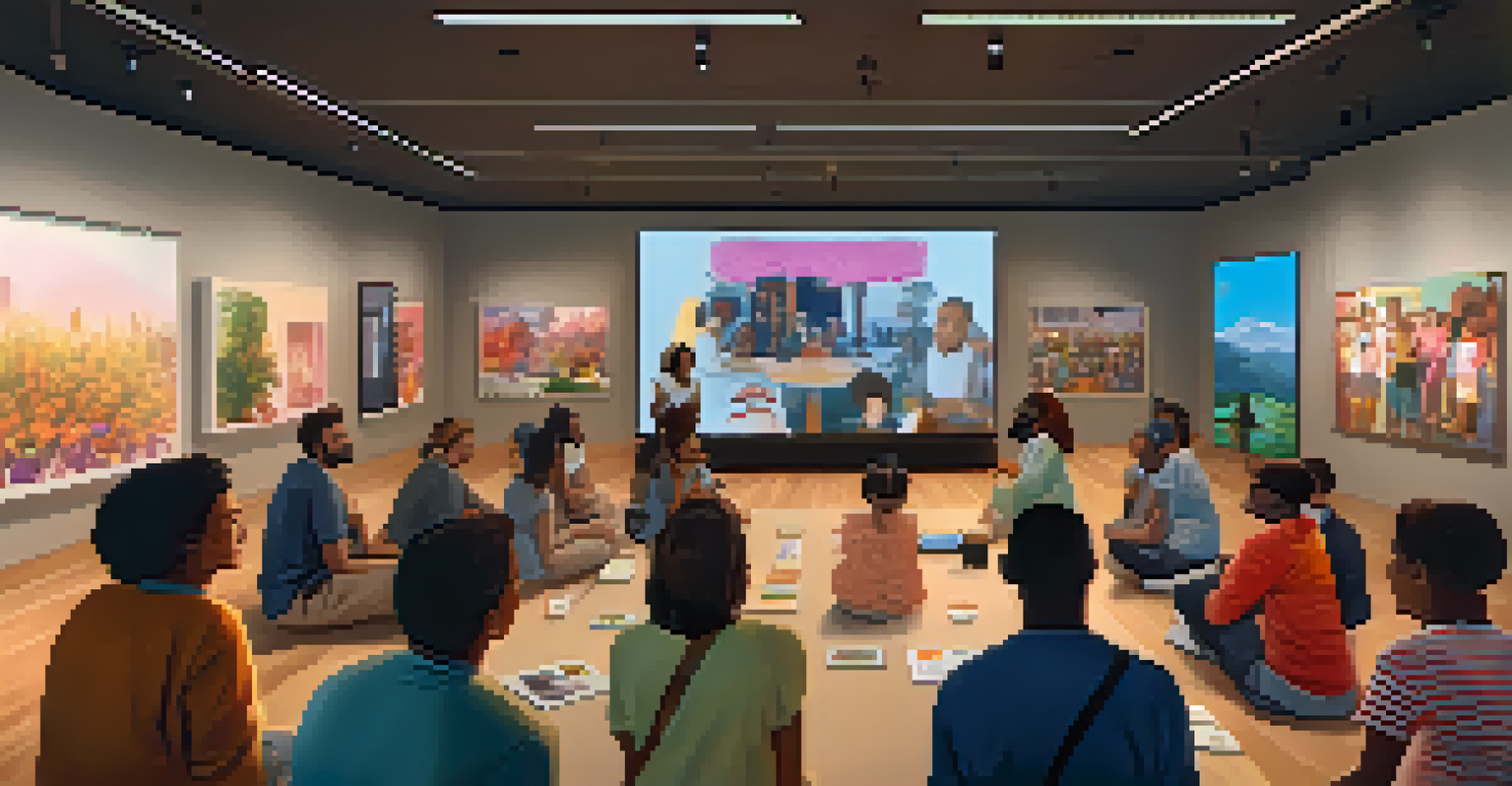Case Studies: Successful Governance Models in NFT Projects

Understanding Governance in NFT Projects
Governance in NFT projects refers to the decision-making processes that guide the development and operation of these digital assets. It encompasses rules, roles, and responsibilities that help manage the community and the project's direction. Without clear governance, projects can struggle to maintain engagement and direction, leading to inefficiencies.
Decentralization is the future, and we need to ensure that it is inclusive and transparent for all participants.
Many NFT projects begin with centralized governance, where a core team makes decisions. However, as they grow, many transition to decentralized models, allowing holders to have a say in the project's future. This shift not only fosters community trust but also aligns with the decentralized ethos of blockchain technology.
Effective governance models can vary significantly, but they often include mechanisms like voting, proposals, and community discussions. By understanding these frameworks, NFT projects can establish a robust system that encourages participation and transparency among stakeholders.
Case Study: Decentraland's Governance Structure
Decentraland is a virtual reality platform powered by the Ethereum blockchain, where users can create, experience, and monetize content and applications. Its governance structure allows LAND holders to vote on policy updates, land auctions, and other critical decisions. This democratic approach empowers users and fosters a sense of ownership within the community.

The Decentraland DAO (Decentralized Autonomous Organization) plays a crucial role in its governance model. Through the DAO, LAND owners can propose changes and vote on various issues, ensuring that every voice is heard. This transparency has helped maintain engagement and trust in the platform, contributing to its growing success.
Decentralized Governance Empowers Users
Many NFT projects transition from centralized governance to decentralized models, allowing community members to actively participate in decision-making.
One notable example was the community's decision to fund a virtual art gallery within Decentraland. This initiative not only showcased user-generated content but also reinforced the importance of community-driven projects, demonstrating how effective governance can lead to innovative outcomes.
Case Study: Aavegotchi's Unique Governance Model
Aavegotchi combines NFTs with DeFi (Decentralized Finance) elements, creating a unique governance model that engages users in multiple ways. Each Aavegotchi is an NFT backed by aTokens, which gives holders a stake in the platform's success. This integration allows users to participate in governance while also earning yield on their assets.
In any community, the most important thing is the people involved and how they engage with one another.
The Aavegotchi community utilizes a voting mechanism where users can propose and vote on changes to the ecosystem. This includes decisions on game mechanics, partnerships, and further development. The more Aavegotchis a user holds, the greater their voting power, incentivizing broader participation and investment in the platform.
By fostering a playful yet impactful governance structure, Aavegotchi has managed to cultivate a vibrant community that feels invested in its future. This model demonstrates that combining entertainment with governance can lead to a dynamic and engaged user base.
Case Study: Friends With Benefits and Community Engagement
Friends With Benefits (FWB) is an NFT community that focuses on social engagement and collaboration among its members. Its governance model revolves around token-based membership, where holders have access to exclusive events and decision-making processes. This creates a sense of belonging and encourages active participation.
FWB employs a unique proposal system where members can submit ideas for community initiatives. Each proposal is discussed and voted on, ensuring that the direction of the community reflects the desires of its members. This approach has led to various successful projects, from curated events to collaborative art exhibitions.
Tokenomics Aligns Stakeholder Interests
Effective tokenomics in NFT projects can enhance governance by linking ownership to voting rights, encouraging user engagement and commitment.
The success of FWB highlights the importance of community-driven governance in NFT projects. By prioritizing member engagement and collaboration, FWB has built a thriving community that continually evolves based on its members’ input.
Analyzing the Role of Tokenomics in Governance
Tokenomics, or token economics, refers to the study of how tokens are distributed, used, and incentivized within a blockchain ecosystem. In NFT projects, effective tokenomics can significantly influence governance by aligning the interests of stakeholders. When structured well, it encourages active participation and long-term commitment from users.
For instance, many projects allocate governance tokens to early supporters or NFT holders, granting them voting rights and influence over project decisions. This creates a direct link between ownership and governance, ensuring that those most invested in the project have a say in its direction. Such structures can lead to more informed and responsible decision-making.
By analyzing successful tokenomics strategies, NFT projects can better understand how to engage their communities and foster a sense of shared ownership. This alignment of interests ultimately leads to a more sustainable and successful governance model.
Challenges in Implementing NFT Governance Models
Despite the advantages of decentralized governance, NFT projects often face challenges in implementation. One common issue is the lack of participation from token holders, which can lead to a small group making decisions for the entire community. This can undermine the very essence of decentralized governance and create feelings of disenfranchisement among users.
Another challenge lies in the complexity of governance proposals. If the proposals are too technical or convoluted, many community members may feel overwhelmed and choose not to engage. Simplifying the language and process can help make governance more accessible to a broader audience.
Community-Driven Governance is Key
Successful NFT initiatives prioritize community engagement and collaboration, fostering a sense of belonging and ensuring decisions reflect member desires.
Moreover, striking a balance between efficient decision-making and community input is crucial. Too many voices can lead to indecision, while too few can stifle innovation. NFT projects must continuously refine their governance structures to overcome these hurdles and ensure they remain responsive to their communities.
Future Trends in NFT Governance Models
As the NFT landscape continues to evolve, so too will governance models. Emerging technologies, such as AI and machine learning, could play a role in enhancing decision-making processes. By analyzing data and predicting community trends, these technologies could help NFT projects make more informed governance choices.
Additionally, we may see an increase in hybrid governance models that combine both centralized and decentralized elements. This approach could provide the stability of traditional governance while still allowing for community input, creating a more balanced decision-making process.

Ultimately, the future of NFT governance will likely focus on creating more inclusive, transparent, and efficient systems. As projects learn from each other's successes and challenges, we can expect to see innovative governance models that better serve their communities and enhance the NFT ecosystem as a whole.